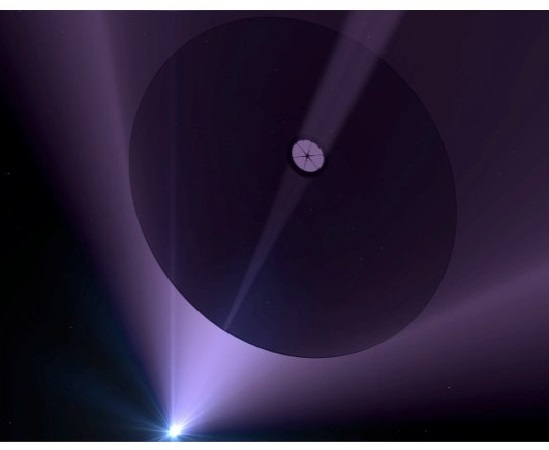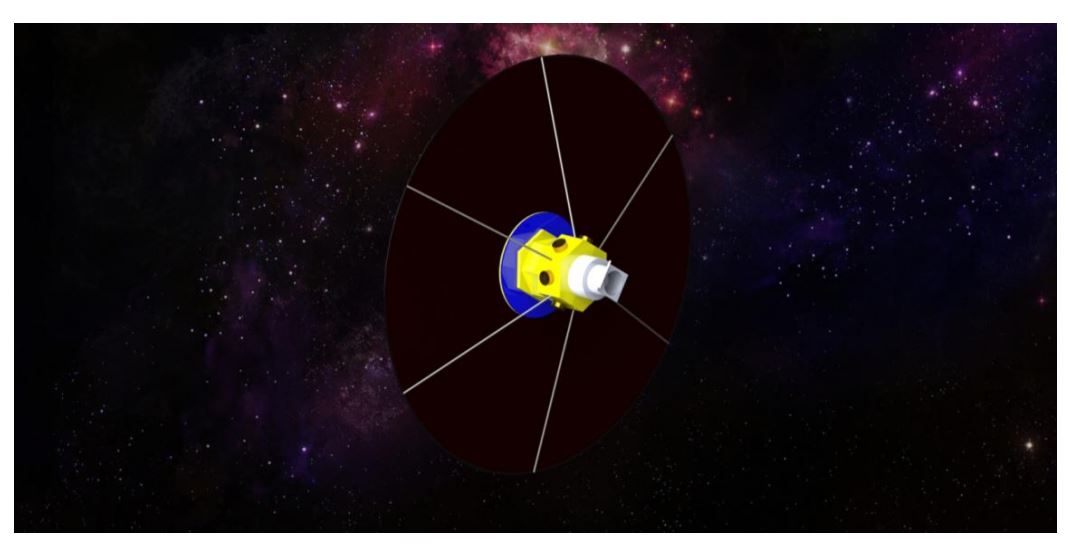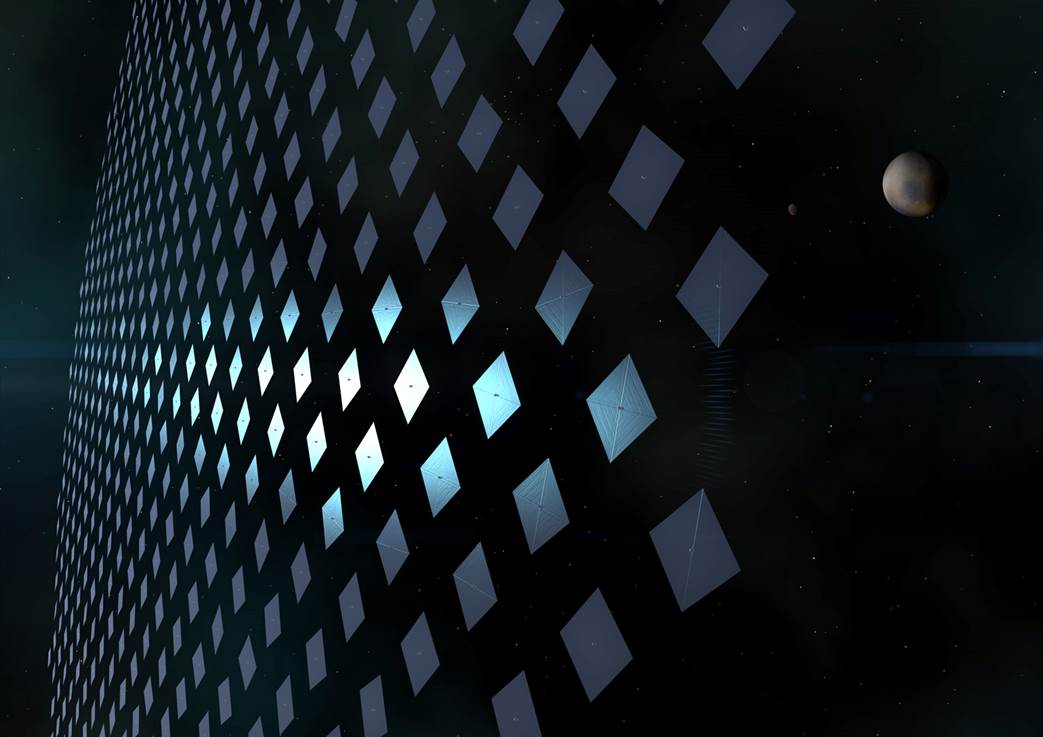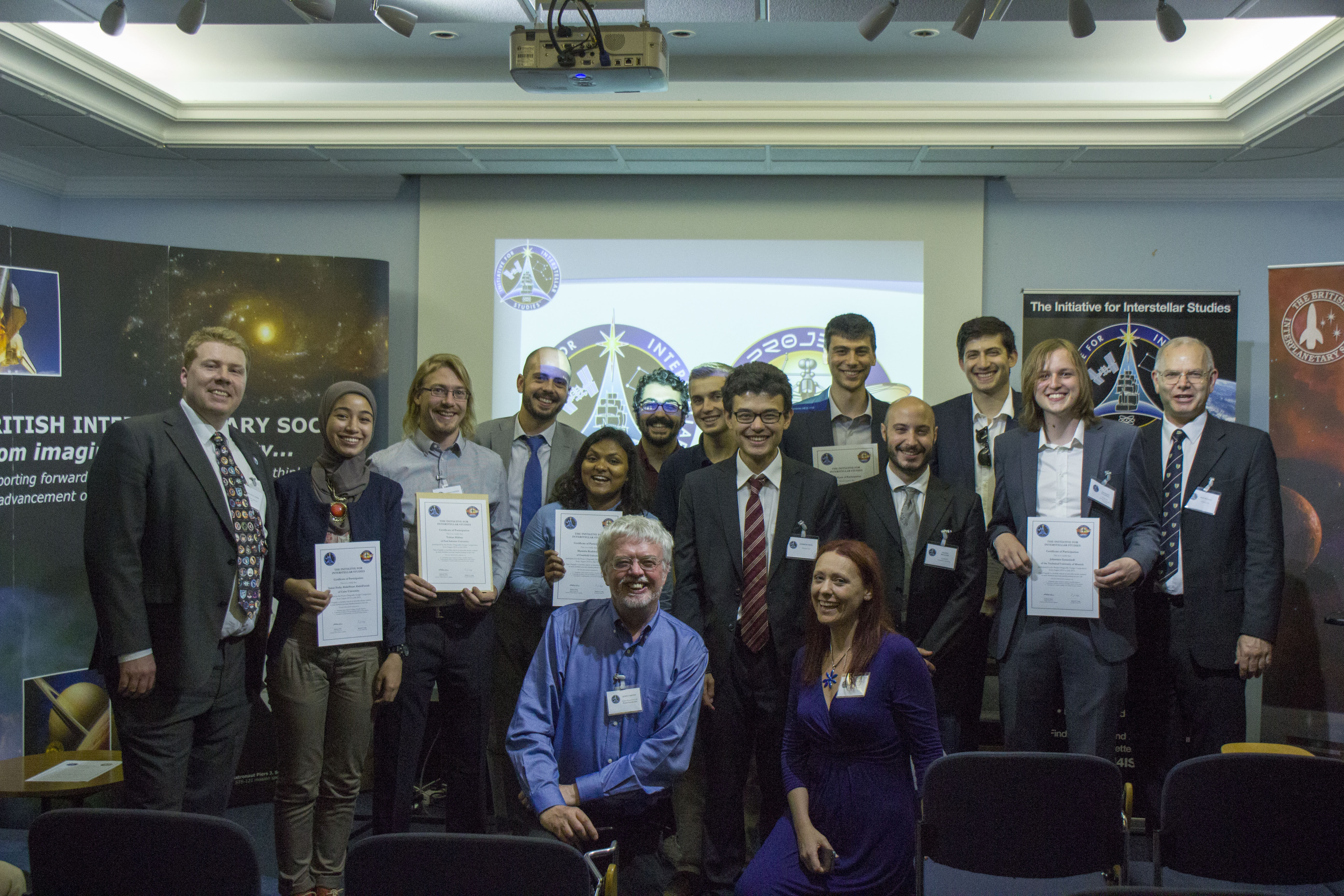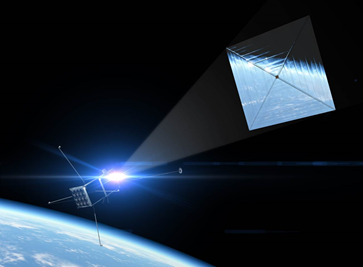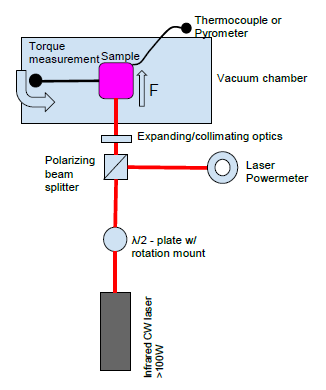Initiative for Interstellar Studies (i4is)¶
I have been involved with i4is since August 2013. The organizations goals are:
Establish a financially sustainable and internationally recognised Institute for Interstellar Studies.
Promote the benefits and advocate for our vision of interstellar flight.
Establish an enduring foundation to support a broad scope of interstellar focussed activities of the institute.
Conduct activities to expand the institutes projects and programs globally so as to create collaborative partnerships.
Participate in research and development to advance capabilities for deep space precursor and interstellar missions this century.
In reality this means that i4is is not only conducting technical research and studies but also focuses strongly on its mission to educate and make relevant topics more accessible for a broader audience, see also the i4is website. We are always in need for more motivated members, so feel free to reach out to me or i4is directly, if you are interested!
Currently, I am the deputy director of the i4is technical committee. In this role I call regular meetings, disseminate information, and I have helped in writing a number of grant proposals, e.g. for Breakthrough Starshot and the NASA Innovative Advanced Concepts program (NIAC). I have also represented i4is in talks at events such as the MIT Space Exploration Initiative’s Beyond the Cradle Conference. Finally, I am or have been involved in a number of technical projects and efforts of the educational committee. A more detailed description of some of these is given in the following.
Some of our work has also grabbed quite a bit of media attention
Project Dragonfly¶
Project Dragonfly is a mission concept for a full-scale, laser-sail driven spacecraft designed to reach the solar-system nearest to us, Alpha-Centauri, within 100 years of its launch. Besides internal mission design studies, we wanted to cast a wider net and create more interest in the topic. Therefore, we started the Dragonfly University Competition. Supported by us, four teams from four different universities (Cranfield, Cairo, TU Munich, UC Santa Barbara) completed the challenge and delivered impressive and complete mission proposals. The competition included a final presentation in London (which I unfortunately could not attend) and was completely funded through a Kickstarter Campaign: Dragonfly Kickstarter Campaign.
Some of the teams went on and published their proposals in renowned journals. Project Dragonfly also was a cornerstone of our efforts to support the Breakthrough Starshot Initiative. Several of our follow-up projects are based on the Project Dragonfly results.
Project Glowworm¶
The technological and economical investments required to build a full-scale laser-sail spacecraft and infrastructure (Gigawatt laser arrays) is way beyond what a single organization can achieve at this point. We therefore used the insights we gained in Project Dragonfly to come up with small-scale mission and research proposals that could be executed realistically with current grant amounts and existing or near-term technologies.
These proposals are summarized as Project Glowworm and consist of a cube-sat laser-sail demonstration mission, laser-sail spacecraft development, and ground-based tests for the development and characterization of the potentail laser-sail materials.
The cube-sat mission explored different concepts to have a laser emitter mounted on a cubesat which would then be used to raise or lower the orbit of a secondary, smaller spacecraft as a proof of concept. Analysis of the mission requirements even culminated in a journal publication. The spacecraft development focuses on concepts from the growing field of femtosat or ChipSat spacecrafts, i.e. millimeter-size spacecraft, which I am also discussing in more detail further below. Finally, the ground-based tests proposed experimental investigation of several baseline laser-sail materials (such as Mylar) and comparison with dielectric coatings on extremely thin substrates. The dielectric coatings can achieve extremely high reflectivities, if layered correctly, and testing could be done with power densities close to what a real laser-sail would experience. A proposal for the execution of these experiments was submitted to Breakthrough Starshot.
Asteroid Mining¶
Asteroid mining is not only interesting from a ressource abundance perspective, but also due to the possiblity of moving some of the most polluting industries off our planets surface and into a sphere where environmental concerns do not have to be of great concern. Currently, some of the biggest obstacles towards its realization is the huge estimated initial investment, the relatively long break even time (>10 years) and the competition with ressources simply brought up from Earth’s gravity well. Therefore, we investigated the possibility of using small spacecraft and distributed architectures to address some of these issues.
We worked on multiple small spacecraft architectures within i4is and with students from the International Space University and submitted a NIAC proposal for one of them. We also started work on techno-economic analysis applied to the implementation of asteroid mining, starting with the profitability of water and platinum considering certain mining architectures. Several papers have already been published on our efforts, e.g. Techno-Economic Analysis, and we hope to increase the impact of our work in this area continuously.
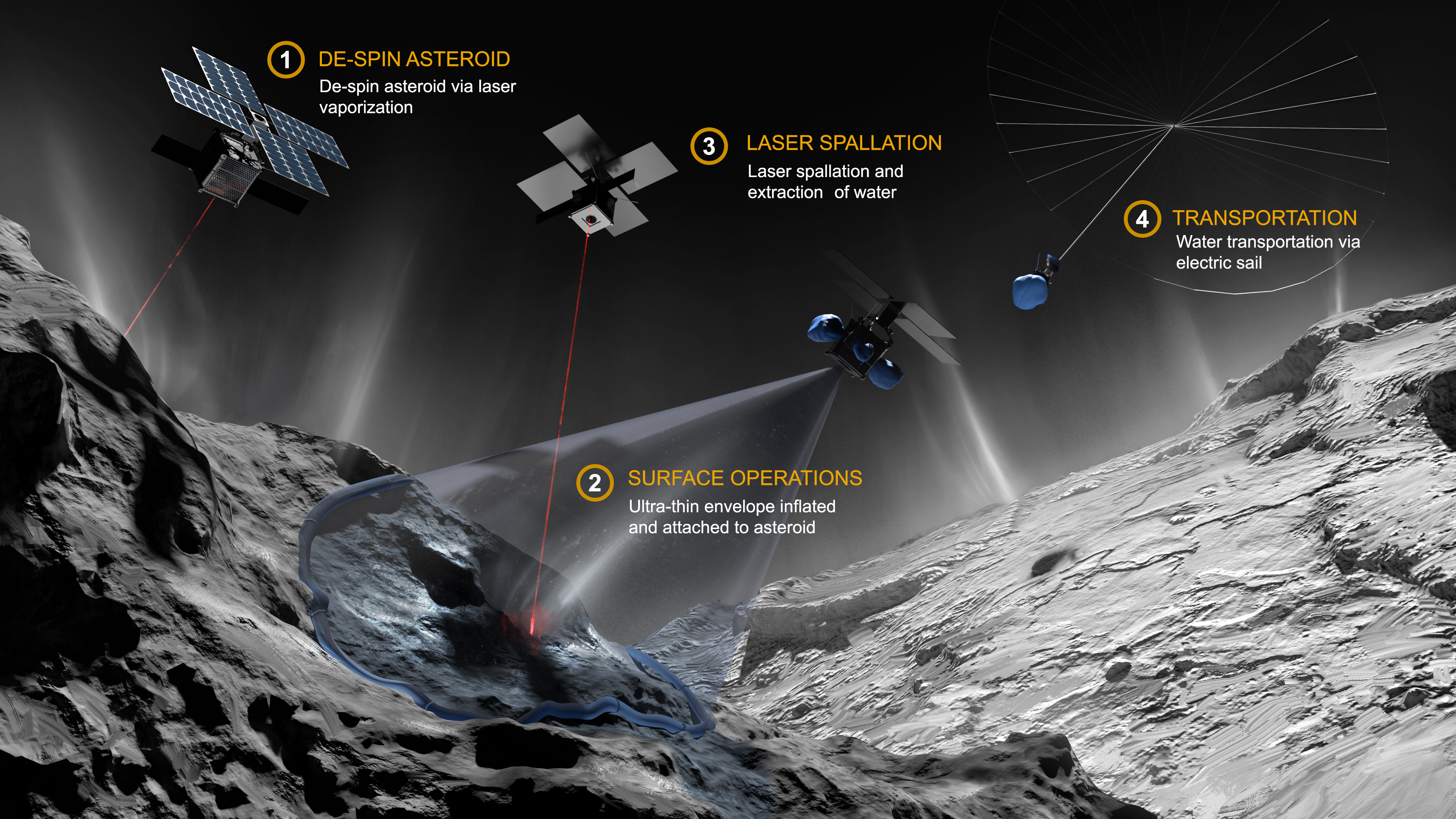
Example i4is asteroid mining architecture using small spacraft with distributed functionalities (credit: Efflam Mercier).¶
ChipSats¶
ChipSats (check out Zack Manchester’s work, too!), femtosats and other extremely small spacecraft are considered to continue the space-technology revolution that has been started by the introduction of the CubeSat standard. The associated low cost helps to democratize space access, which is extremely important for the continue growth of the nascent space industry. Moreover, using these small spacecraft provides an incentive to keep driving and to utilize miniaturization of electronics and research instruments. And finally, the small spacecraft architecture lends itself to distributed system approaches and swarm constellations, topics that are currently at the forefront of spacecraft control, metronomy and interstellar exploration efforts. The latter point is particularly important for us, as deploying swarms of such small spacecraft significantly decreases required propulsive capabilities and increases the likelyhood of mission success.
i4is is involved with the small spacecraft community and has proposed multiple designs for interstellar spacecraft, e.g. the Andromea report spacecraft. We are currently working with a team at Drexel University to realize a prototype spacecraft for our Project Glowworm efforts, and we have been working with the International Space University to advance the ChipSat cause through seminars and student projects.
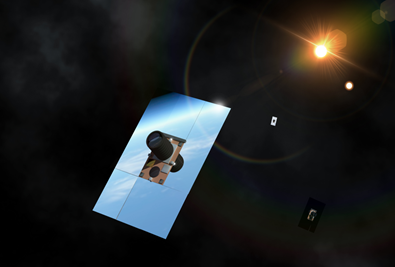
Artist’s impression of the Andromeda ChipSat spacecraft. The target size is on the order of \(1 \times 1\) cm with a thickness between tens of micrometers to several millimeters. If you are interested, the Andromeda report can also be found on ArXiv: Andromeda Spacecraft Report.¶
Education¶
i4is is continuously improving its educational impact. Especially in England we have several representative that regularly visit schools as well as educational and sci-fi events. We also organize events such as starship engineering courses and conferences for topics relevant to interstellar exploration efforts.
Two big pillars of our educational efforts are our cooperation with the International Space University and the Principium Magazine, which is published on a regular basis.
I have worked with two ISU Master’s students on their final projects. One testing the limits of spacecraft miniaturization for asteroid mining, the other developing a ChipSat mission to probe the atmosphere of Venus. Both projects have been very interesting experiences, in which I could help the students but also work on my own mentoring and team working skills.
The Principium magazine can be read by anyone
for free and frequently features articles by big names in the interstellar community. It also
has given me the opportunity to practice writing popular science articles. One of them considers
recent developments in Breakthrough Propulsion and can be found here for the interested reader:
Breakthrough Propulsion article.
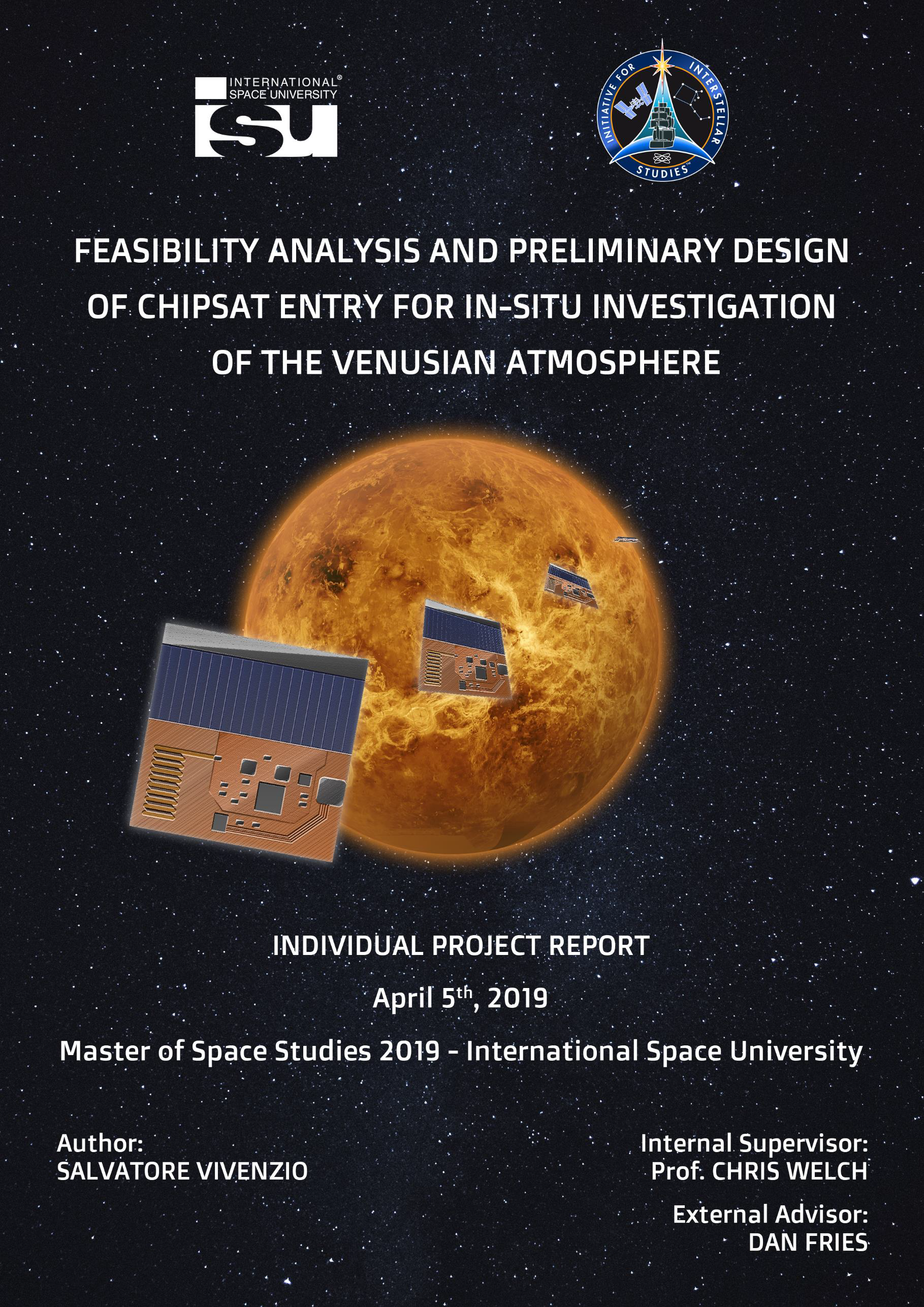
Title page of the final report for a ChipSat mission to Venus by ISU student Salvatore Vivenzio.¶
